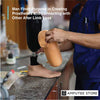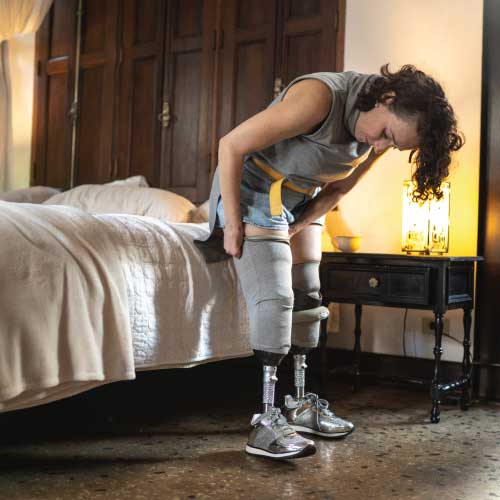This Depression Treatment Can Relieve Symptoms in Five Days
A 2017 study found that depression is the leading cause of disability worldwide. This is because treatment often causes numerous side effects, or some patients do not respond at all. Add to that the number of people who never seek professional help because of the stigma of mental illness.

However, when depression is left untreated, studies show that it can lead to suicide. Those suffering from depression need help stat.
The answer may lie in the "Stanford neuromodulation therapy," a new type of repetitive transcranial magnetic stimulation (rTMS) that can help alleviate symptoms in as little as five days.
Treating depression with electrical pulses
In 2018, the Stanford University School of Medicine conducted a study designed for people who had exhausted all treatment options. Many of the volunteers struggled with depression and suicidal thoughts for years.
The study participants first underwent an MRI scan to help the researchers find the best area to deliver electrical pulsations to the brain. Then the volunteers submit themselves for the treatment for 10 hours a day for five consecutive days. A coil is placed on the head, creating a magnetic field that sends electrical pulses through the skull every 15 seconds.
The goal is to send electrical pulses to the prefrontal cortex—the part of the brain that controls emotions, dreams, and plans. According to one of the researchers, psychiatrist Nolan Williams, the prefrontal cortex is underactive in depression. Scientists signal to that part of the brain through the electrical pulses to turn on and remember to stay on.
In an interview with KQED, Williams explained that pumping the prefrontal cortex helps minimize areas of the brain that stimulate anxiety and fear. Simply put, rTMS is about using electrical pulses to balance out irregular brain activity.
Fast and long-lasting results
The results were immediate. One participant reported feeling a strange calm settle over her at the end of the first day. And during her ride home, she said that she stared outside the window and enjoyed the ride instead of grabbing things, yelling, and being hysterical—her default mode for many years.
As of 2021, the participant said that the result of the treatment is still holding up. She acknowledges that she still has ups and downs, but she feels different from the person she was before the rTMS treatment.
A promising treatment for the modern world
The Stanford neuromodulation therapy is a new take on the existing rTMS treatment. By adding MRI scans and increasing the dose of rTMS, the researchers have devised a remedy that works about eight times faster than the currently approved version of rTMS.
The details of a recent randomized control trial were published in The American Journal of Psychiatry. The paper showed that remarkable results are possible in five days or less, and almost 80% of patients have gone into remission. This is compared to 13% who received the placebo treatment. The patients also did not report severe side effects, but the most common complaint was a slight headache.
Experts say that this treatment is a game-changer, largely because of how fast it works. The shorter treatment time will make it accessible for many people who cannot afford to take several weeks off work or cover child care during that time.
Most importantly, psychiatrists say that this new treatment can address the issue of clogging up psych wards by offering a fast and effective solution for acute suicidality.
When will it be available?
The Stanford neuromodulation therapy could be widely available by the end of 2022. The researchers hope that the FDA clearance will come through by that time.
As for insurance coverage, Williams is optimistic that more companies will eventually cover the new treatment because it works faster, meaning it's more cost-effective than the current rTMS treatment, which can take up to six weeks. As of this publication, major insurance companies and Medicare currently cover the existing rTMS treatment. However, some plans may require patients to show that they have exhausted all other options.











































































